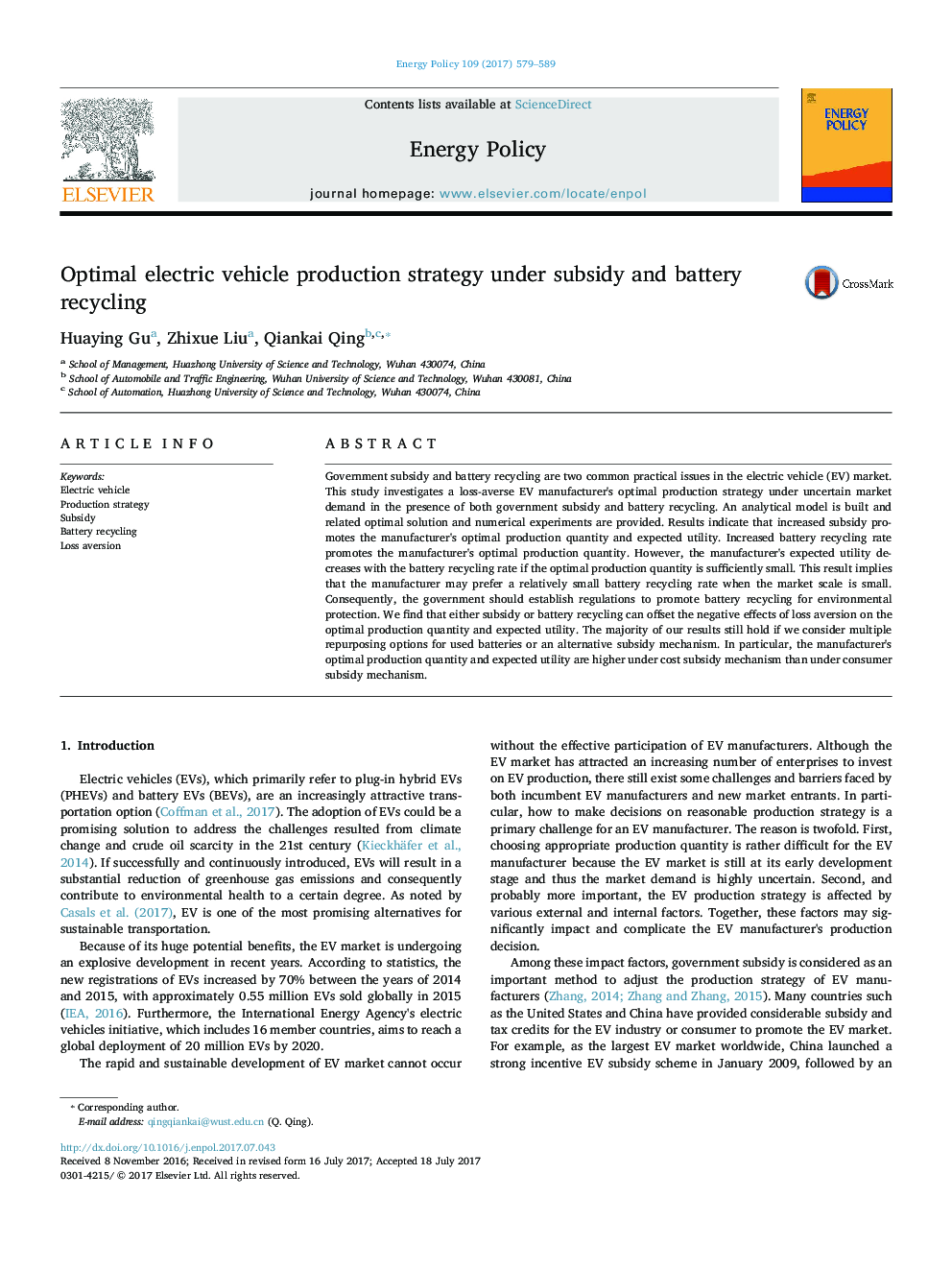| Article ID | Journal | Published Year | Pages | File Type |
|---|---|---|---|---|
| 5105691 | Energy Policy | 2017 | 11 Pages |
Abstract
Government subsidy and battery recycling are two common practical issues in the electric vehicle (EV) market. This study investigates a loss-averse EV manufacturer's optimal production strategy under uncertain market demand in the presence of both government subsidy and battery recycling. An analytical model is built and related optimal solution and numerical experiments are provided. Results indicate that increased subsidy promotes the manufacturer's optimal production quantity and expected utility. Increased battery recycling rate promotes the manufacturer's optimal production quantity. However, the manufacturer's expected utility decreases with the battery recycling rate if the optimal production quantity is sufficiently small. This result implies that the manufacturer may prefer a relatively small battery recycling rate when the market scale is small. Consequently, the government should establish regulations to promote battery recycling for environmental protection. We find that either subsidy or battery recycling can offset the negative effects of loss aversion on the optimal production quantity and expected utility. The majority of our results still hold if we consider multiple repurposing options for used batteries or an alternative subsidy mechanism. In particular, the manufacturer's optimal production quantity and expected utility are higher under cost subsidy mechanism than under consumer subsidy mechanism.
Related Topics
Physical Sciences and Engineering
Energy
Energy Engineering and Power Technology
Authors
Huaying Gu, Zhixue Liu, Qiankai Qing,
